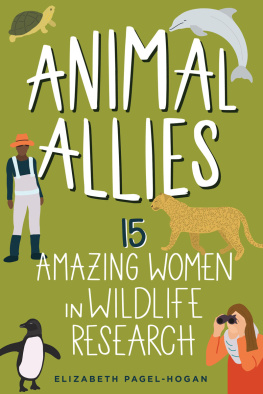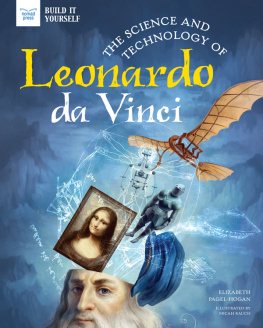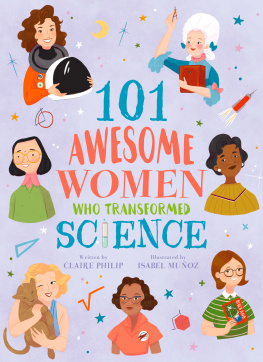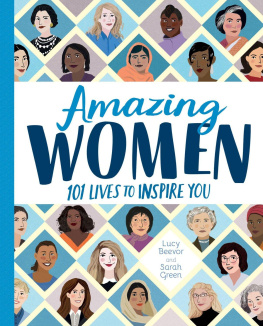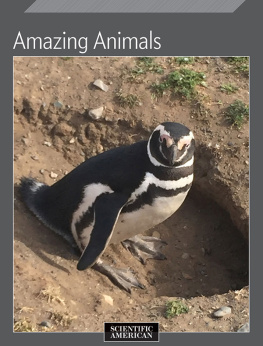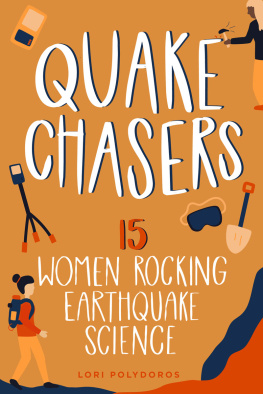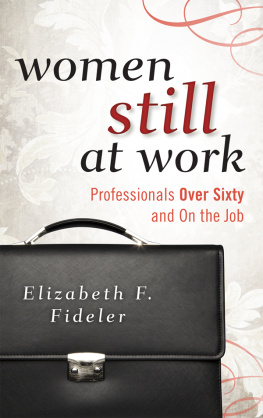

Praise for Animal Allies
Elizabeth Pagel-Hogan makes STEM come alive with her captivating narratives of women scientists in the field. The detailed slice-of-life biographies, written in accessible language, along with sidebars that include fascinating background info and subtle calls to action, create an indispensable volume for the classroom or homeschool library.
Teresa Robeson, author of Queen of Physics
The women highlighted in Animal Allies are funny, smart, and above all else, tough. Reading was more than an inspiration, it was a reminder that women are out there, all over the world, learning, exploring, and figuring out how animals liveall while creating space for future generations of passionate women to work alongside us.
Dr. Michelle LaRue, associate professor at University of Canterbury
This is the book I wish I had as a young girl interested in science! Reading the personal stories about these amazing women in biology and learning about their research and careers will without a doubt inspire the next generation of women scientists. This is a must-have book for anyone interested in animals and science.
Dr. Corrie Moreau, evolutionary biologist and professor at Cornell University
A timely and terrific book about women in wildlife research. The portraits are fascinating; the additional resources and activities fabulous. Animal Allies will inspire young nature lovers everywhere.
Deborah Hopkinson, author of Butterflies Belong Here
Animal Allies inspires girls to explore a career in STEM through the biographies of trailblazing women in wildlife research. This book opens the windows of opportunities and doors of imagination for young women. Every child should have the opportunity to dream about a career path where they can create, imagine, and make a difference in the world.
Dr. Artika R. Tyner, author of Justice Makes a Difference: The Story of Miss Freedom Fighter, Esquire
I loved this book! The profiles are readable and personal, capturing the passion these women feel for their work protecting wildlife. The conversational style of writing makes science and scientists feel accessible, while connecting specific living creatures to larger environmental issues like climate change and social justice issues like racism and sexism.
Mary Cronk Farrell, award-winning journalist and the author of Fannie Never Flinched and Pure Grit
Delighted and honored to be part of this book, thank you for including me amongst this group of inspirational, motivated and successful women.
Dr. Helen Pheasey, lecturer at the School of Anthropology and Conservation
Copyright 2022 by Elizabeth Pagel-Hogan
All rights reserved.
Published by Chicago Review Press Incorporated
814 North Franklin Street
Chicago, Illinois 60610
ISBN 978-1-64160-622-6
Library of Congress Control Number: 2022931378
Cover and interior design: Sadie Teper
Printed in the United States of America
5 4 3 2 1
To Chrissy and Denny, thanks for letting me bring home all those pets.
The time to protect a species is while it is still common.
Rosalie Barrow Edge
Contents
Introduction
Do you feed birds?
Do you wish you had night vision to see the animals that roam your neighborhood?
Do you not squish spiders?
Would you help a turtle safely cross the road and wonder where its going? (Probably to the shell station.)
Do you wonder what you can do to protect wildlife?
Then this is the book for you.
This book is about 15 scientists from around the world who love learning about living things. They are curious and dedicated. Sometimes they are clumsy too. They have great days, like when they get a photo of a secretive wild cat! They have hard days, like when they face the effects of pollution and climate change.
But they are determined. And they dont keep their discoveries or difficulties a secret. They want you to come on the journey with them! Learn about the science, wonder why, ask questions, and you can be an animal ally too.

Part I: Birds


Corina Newsome: Saving the Seaside Sparrow
The sharp grasses growing in the salt marshes off the coast of Georgia make it a dangerous place to work.
says Corina Newsome. Its drawn blood, sweat, and tears.
Corina Newsome is a birder, a Black woman, an activist, and a scientist. She is a researcher working on her masters degree in biology from Georgia Southern University and has spent weeks in the salt marshes off the Georgia coast.
It smells like a mix between salt and wet dirt, Corina says. In her knee-high wading boots, tank top, and a visorno hat could contain her braidsshe has braved the challenges of the marsh.
Walking in mud is like walking up stairs the entire time. The first time I went out I was utterly exhausted within 30 minutes, she says.
The marsh is no easy place to study. Before arriving there, she had to get through strips of grass filled with grasshoppersit seemed like thousands of them. The shrieks and calls of large wading birds like herons and egrets startled her.
Their calls are terrifying, like dinosaurs. One time I didnt know a tricolored heron was there. It called, and I thought it was a man chasing me. I screamed and ran, she says.
And then there are the sharks.
I was taking a rest and had my foot in a tidal river, and a dogfish shark swam over my foot. I was stunned, she says.
The marsh isnt just a dangerous place to study; it can be a dangerous place to live, especially for the Seaside Sparrow.
Corina is researching the Seaside Sparrow. Its a tiny grey and brown bird with a flashy yellow patch on its face. It makes its home in the grasses of the salt marsh. The Seaside Sparrow is found along the East Coast of the United States and down to parts of the Gulf Coast. This bird doesntand cantlive anywhere else. The female weaves an open cup nest suspended above the ground in the cordgrass. She lays between two and six white, speckled eggs. When they hatch, both the male and female feed the hatchlings. The young birds leave the nest soon after hatching, around 12 days, if they survive that long.
Sometimes, an unusually high tide causes the eggs and chicks to drown if they are too close to the ground. Its a risk all Seaside Sparrows face. But if the sparrowsbuild their nests higher to keep them from flooding again, there are other threats. Predators, including raccoons, mink, and the local rice rat, all stalk the grasses, hunting for the nests. They are easier to find if they are high off the ground. So the sparrows have to build their nests in a perfect place, not too low, where theyll get flooded, and not so high that predators can see them.
Next page
